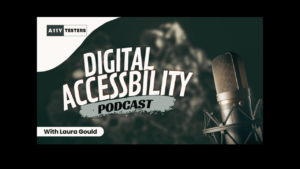In recent years, online learning platforms have revolutionized the education industry, breaking barriers of time, place, and access to knowledge. However, as we embrace this digital paradigm, it is crucial to ensure that all learners, including those with disabilities, can equally participate and benefit from these platforms. This is where the importance of accessibility in online learning platforms comes into play.
What is Accessibility in Online Learning?
Accessibility refers to the design and development of online learning platforms in a way that enables individuals with disabilities to perceive, navigate, and engage with the content effectively. It involves removing barriers and ensuring that all learners, regardless of their abilities, can access and interact with educational materials, tools, and features.
Why is Accessibility Important in Online Learning Platforms?
- Equal Opportunities: Accessibility in online learning platforms ensures equal access to education for learners with disabilities. It enables them to utilize the same resources and opportunities as their peers, promoting equality in the learning environment.
- Inclusive Learning Experience: Accessible online learning platforms create an inclusive learning experience that caters to the unique needs of diverse learners. It provides flexibility and customization options, allowing individuals with disabilities to learn in a way that suits their specific requirements.
- Legal and Ethical Responsibility: Accessibility is a legal requirement in many countries. The inclusive design ensures compliance with accessibility standards, such as the Web Content Accessibility Guidelines (WCAG), safeguarding against potential legal repercussions.
- Enhanced Learning Outcomes: When online learning platforms are accessible, learners with disabilities can fully engage in the learning process, leading to improved learning outcomes. By providing accessible content and tools, educators can unlock the potential of every learner, fostering their academic growth and success.
Key Considerations for Accessibility in Online Learning Platforms
- Screen Reader Compatibility: Ensure that all course materials, documents, and multimedia resources are compatible with screen readers and assistive technologies. Provide alternative text descriptions and captions for images and videos, allowing visually impaired learners to access the content.
- Keyboard Navigation: Design online learning platforms that can be accessed using a keyboard alone, as some learners may have limited or no dexterity. Ensure easy navigation, logical tab order, and visible focus indicators for improved usability.
- Captioning and Transcripts: Provide closed captions and transcripts for audio and video content. This feature benefits learners with hearing impairments and supports those who may have difficulty understanding spoken language.
- Color Contrast and Font Accessibility: Use appropriate color contrast ratios to ensure text legibility for learners with visual impairments. Provide font options and adjustable text sizes to accommodate different reading preferences.
- Accessible Assessments: Create assessments that are accessible and fair to all learners. Consider providing alternative formats, extra time, or assistive technologies to individuals who need them. Avoid reliance on formats that may disadvantage learners with certain disabilities.
The Future of Accessibility in Online Learning Platforms
As the world becomes increasingly digital, the demand for accessible online learning platforms will continue to grow. It is imperative for educational institutions and platform developers to prioritize accessibility as an integral part of their design and development strategies.
Advancements in technology, such as artificial intelligence (AI) and machine learning, hold great promise for further enhancing accessibility in online learning platforms. These technologies can assist in real-time captioning, providing personalized recommendations, and adapting content to meet individual user needs.
Ultimately, the goal is to create an inclusive learning environment that embraces diversity and empowers every learner. By valuing accessibility in online learning platforms, we can foster a more equitable and inclusive educational landscape, benefiting learners of all abilities.
Remember, accessibility is an essential component of the digital educational ecosystem. By incorporating accessibility principles from the outset, we can build a brighter future where knowledge knows no boundaries and everyone has the opportunity to thrive.



